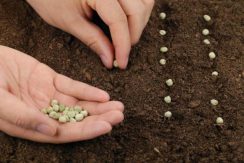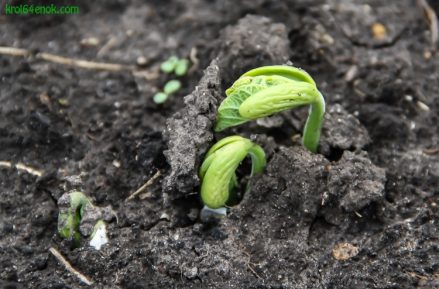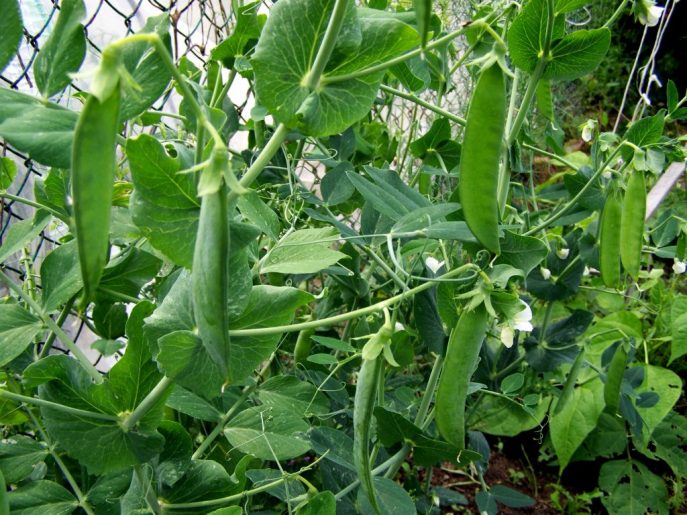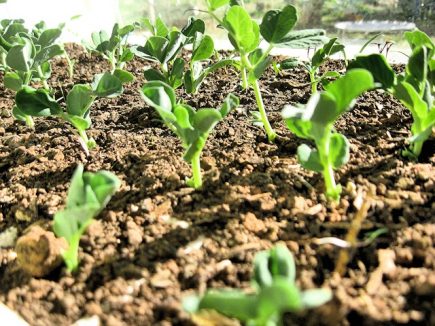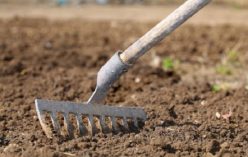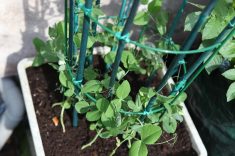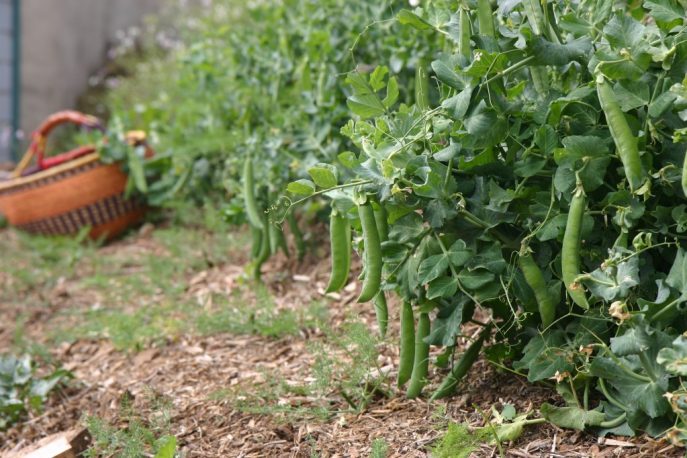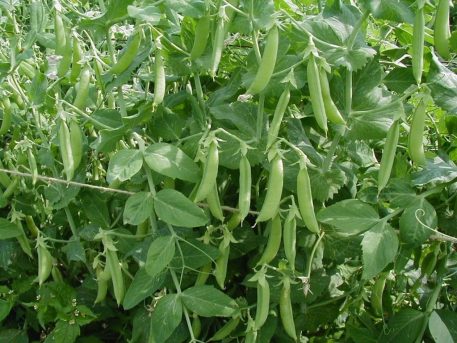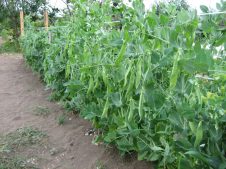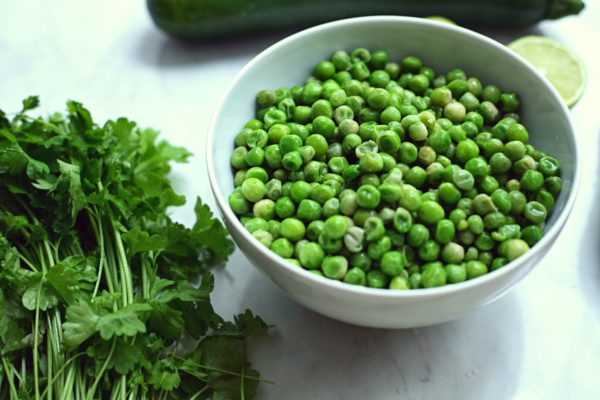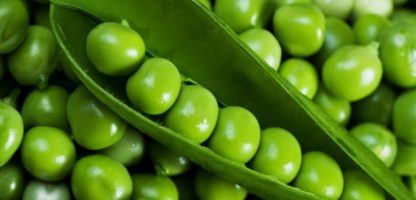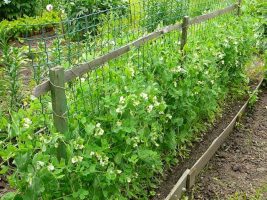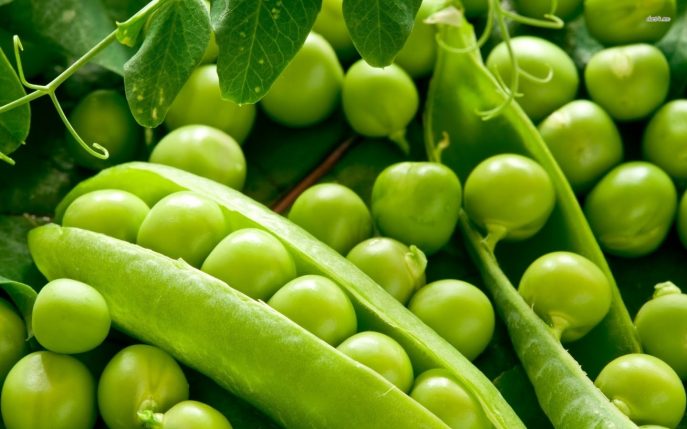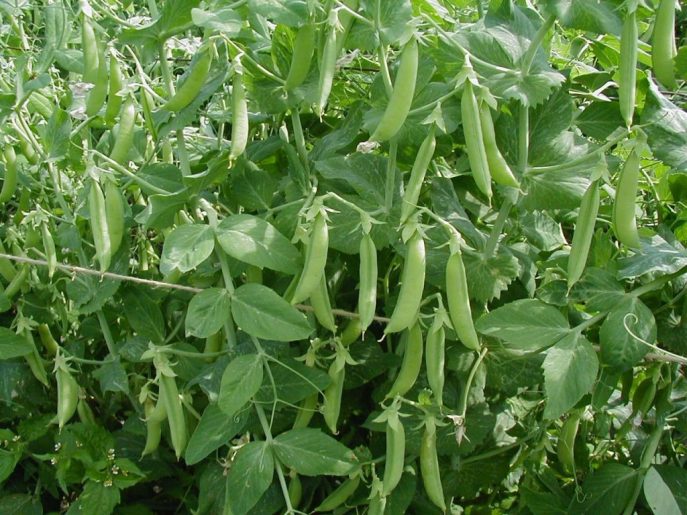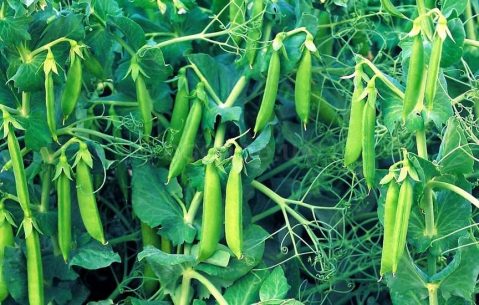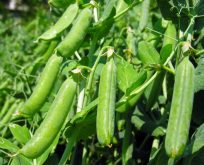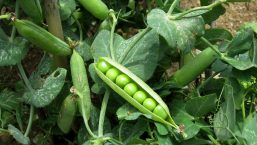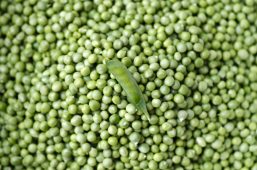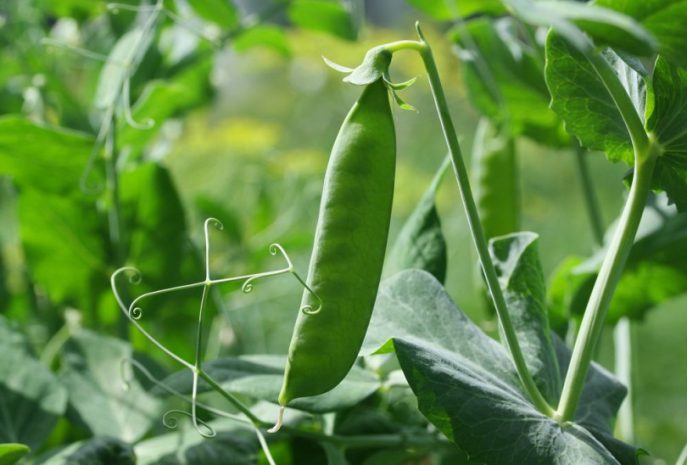Pea is an annual fast-growing crop that can be found in every garden. This prevalence is explained by the fact that it is undemanding in care, contains a large number of nutrients, and also saturates the soil with nitrogen. To get a rich harvest, you need to know when and how to plant peas and which varieties are better to choose.
Material Content:
Species and varieties of peas
There are many varieties of peas that differ in the shape of the leaves, the size of the flowers and fruits, as well as the seeds. By the duration of the vegetation cycle, the culture can be:
- early ripening (50-55 days);
- mid-season (60-65 days);
- medium late (75-80 days);
- late (up to 100 days).
In addition, peas are early, mid-ripening and late, depending on the ripening period, and there is also a classification of the crop for its intended purpose.
Brain pea
These varieties are distinguished by somewhat shriveled fruits containing large amounts of sugar. The most popular brain varieties include:
- Adagum. Variety with an average maturity and high taste. Fruits are colored greenish yellow.
- Alpha. Early ripe subspecies with excellent taste. The pods of the plant have a saber shape and a sharp tip, their length is 7-9 cm. From 5 to 9 seeds are located inside.
- Vera. The species is characterized by high productivity and early ripening. The size of the pods ranges from 6.5 to 9 cm, the number of peas in them is 6-10 pieces.
- Phone. This is a late-ripening variety with long stems and pods up to 11 cm in size. In each of them, from 7 to 9 large sweet fruits of a dense green color are formed.
Harvesting pea cereal species is carried out at the stage of technical maturity. Fruits are frozen or canned.
Sugar peas
Such varieties are characterized by very shriveled fruits of small size. Common types of sugar peas are:
- The Miracle of Kelvedon. Early ripe variety with high productivity. Pods of culture reach 6-8 cm in length, and inside are large dark green peas in an amount of 6 to 9 pieces.
- Zhegalova 112. A variety with an average ripeness and high yield. It has slightly curved pods 10-15 cm in size, in which 5-7 sweet seeds are formed.
- Ragweed. A variety characterized by early maturity and high yield. Pods can reach from 6 to 10 cm in length and contain 5-8 peas.
- Sugar Oregon. This variety is mid-early and is characterized by moderately curved pods up to 10 cm in size, which contain 5-7 peas.
A distinctive feature of sugar subspecies is the absence of a parchment layer, which makes it possible to eat peas in food with a pod.
Peas
These varieties have large pods and smooth medium-sweet seeds containing a large amount of starch. Most often on the beds you can find such varieties of peeling peas:
- Bingo. Late-ripening culture with long pods containing 7-8 seeds. The fruits are distinguished by excellent taste.
- Dakota. Variety with early ripening and high productivity. The pods of the plant are long, from 9 to 12 cm, and the peas are large.
- Dinga. This variety is characterized by early maturity and a slightly curved shape of pods reaching a length of 11 cm. Inside contains 9-11 dark green seeds.
- Jobs. Variety with a medium-late ripening period. The length of the pods is from 7 to 9 cm, and the number of sweet peas is 7-10 pieces.
- Vegetable miracle. Mid-ripe culture with large, up to 11-12 cm, pods and rounded sweet fruits.
- Somerwood. Peas with a medium late ripening period and high productivity. The pods reach 8-10 cm in length, and the fruits are large in size.
The listed varieties of peeling peas are highly resistant to disease and are suitable for both fresh consumption and canning.
It is interesting:classic pea soup recipe
Features of growing crops
Regardless of what kind of peas were planted on the site, in order to get a good harvest, you will need to follow some growing rules:
- place seeds only in fertilized soil;
- stimulate plant growth by feeding nitrate at the rate of 9-10 l per 1 m2 of soil;
- regularly weeding plantations and loosening the soil;
- when the bushes reach a height of 20 cm, place supports on the beds;
- during the flowering period, increase the frequency of watering up to 2-3 times a week;
- to prevent diseases and protect against pests, treat plantings with plant infusions based on celandine, onion husk, wormwood, dandelion or garlic, and also sprinkle soil at the roots with wood ash or tobacco dust;
- collect ripened pods in a timely manner, moving from the bottom of the bush to the top, otherwise the formation of new ovaries will stop.
After harvesting, do not clean the bushes with roots, just cut the stems. Decaying, the underground part of the culture will enrich the soil with oxygen, which will contribute to the improvement of its fertile indicators.
Outdoor landing
Before planting, it will be necessary to sort out the seeds of the culture and remove the damaged or broken peas. You can put the material in the beds dry, after watering the soil, or after a short soaking. In this case, you will need to do the following:
- Prepare a weak solution of boric acid in a ratio of 1 g of substance to 5 liters of water.
- Heat the liquid to 40 ° C and place the seeds in it.
- After 5-7 minutes, remove the planting material and put it on a paper towel so that it dries out a little before being placed in the ground.
Pre-soaking will prevent damage to the roots of the culture by insect pests.
How and when to plant peas?
It is customary to sow peas in spring when the soil dries and warms up well. As a rule, this time falls at the end of April. Landing is as follows:
- Digged and pre-fertilized soil is leveled using a rake.
- Beds break up to a depth of 3 cm at a distance of 20-30 cm from each other.
- The soil is slightly moistened, after which peas are placed in the recesses at a distance of 6-10 cm from each other.
- The beds are covered with earth and slightly compacted by hands. If the soil is very dry, after dripping the seeds, watering is repeated.
Advice! So that the peas sown do not peck the birds, you should cover the garden with a film or place a spruce on top of it.
Soil requirements and site selection
For planting peas, it is better to choose open, well sun-warmed areas, protected from drafts. And since the roots of the culture can penetrate the soil to a depth of 1 meter, it is worth avoiding areas with closely adjacent groundwater.
To get a rich crop of peas, you should place its pre-fertilized soil. You need to prepare the site in the fall, digging it to a depth of 20 cm. After this, you will need to make fertilizer prepared in the following proportions per 1 m2 of soil:
- humus - 4-6 kg;
- superphosphate - 20-40 g;
- potassium salt - 15 g.
In spring, the soil is additionally fertilized with wood ash, evenly distributing it over the site.
Important! When sowing peas, only rotted manure is allowed to be added as a top dressing. The use of any other organic matter will lead to the fact that the plants will rapidly develop green mass, and the fruits will remain small.
After what can pea be sown?
When planting a crop on a site, it should be taken into account which plants were located here before, because this criterion affects the quantity and quality of the crop. After what can pea be sown? Ideal predecessors for him are:
- beet;
- potatoes;
- cucumbers
- carrot;
- Tomatoes
- pumpkin.
You should not sow peas in the territory where such crops used to grow:
- peanut;
- beans;
- soybeans;
- lentils.
In addition, you can not place the culture where it was located last year, it is better to plant other plants here. What to plant after peas? You can take the beds with such vegetables:
- cabbage of any variety;
- carrots;
- radish;
- potatoes;
- Tomatoes
- bell pepper;
- eggplant;
- cucumbers;
- squash;
- zucchini;
- pumpkin.
It is important to consider that it is possible to plant peas in the former plots no earlier than after 5 years, otherwise it will negatively affect the state of the crop.
Peas: Outdoor Care
Planting and caring for peas in open ground will not cause much trouble. After the first seedlings appear, it will take 12-14 days to loosen the soil and spud the plantations, which will allow oxygen to reach the roots. Subsequently, it is important to timely water and fertilize the culture.
Watering and feeding
The culture does not tolerate heat and drought, so it is necessary to irrigate peas regularly. On average, you will need to do this once a week, and after the beginning of flowering, you need to make moisture every 3-4 days in the amount of 8-10 liters per 1 m2 of land.
It is permissible to combine top dressing with watering, having prepared a solution of 5 g of nitroammophos and 10 l of water per 1 m2 of soil. In addition, it is possible to fertilize in culture dry organics, mullein, compounds with potassium and phosphorus.
Tying
Peas have weak thin stems, which, under the weight of the pods, lie on the ground, so the culture needs to be tied.
When the bushes reach a height of 20-25 cm, you will need to install supports along the rows of pegs or metal rods at a distance of 150 cm from each other and stretch the wire or rope.
Advice! To obtain a plentiful harvest, it is important to pinch the tops of the growing stems. This is necessary to stimulate the growth of lateral shoots.The best time for the procedure is considered the morning hours, then before dusk the “wound” has time to dry out.
Diseases and pests of peas: what to process?
Pea care includes not only watering, top dressing and tying, but also the fight against diseases and pests. The most common diseases of this culture include:
- Rust. Red spots on the leaves are a sign of trouble, and spraying with Bordeaux liquid 1% will help to cope with the problem. After 12-14 days, processing is repeated.
- Mosaic. A sign of the disease is twisted leaflets and dark spots on them. Unfortunately, it is impossible to cure a diseased plant, it will need to be destroyed, and the soil should be treated with a solution of manganese. After this, you should not plant any crops on the site during the year.
- Powdery Mildew This problem can be recognized by blackening leaves and cracked pods. A fungicide solution will help get rid of the disease.
In addition to diseases, peas can be attacked by pests, the most common of which are:
- Pea aphids. Most often, this insect spoils the plantings during the flowering period, sucking nutritious juices from the aboveground part of the plant, which leaves the leaves and buds fade and crumble. You can get rid of the problem by treating the beds with a solution of 300 g of laundry soap and 10 l of water.
- Moth and pea weevil. These pests parasitize in the pods, which leads to spoilage of peas. To protect the plantings, a 12% solution of hexachloran is required at the rate of 2 g per 1 m2 of soil.
- Nodule weevil. As a rule, young shoots of peas most often suffer from attacks of this parasite. The insect not only eats the stems and leaves, but also harms the root system. Destroy colonies of weevils will help a solution of dust hexachloran 12% at the rate of 1 g per 1 m2 of plot.
It is necessary to process plantings from pests and diseases after sunset to avoid the appearance of burns on leaves and pods.
Harvesting and storage
Harvesting can begin after 8-12 days after the pods appear on the bushes. In warm weather, they are torn off every other day, and in cool summer - 2 times a week. It’s better to do it in the morning.
Depending on the degree of maturity, you can store the crop in different ways. For example, green or unripe peas are allowed:
- Preserve.
- To freeze.
- Boil for 2-3 minutes in boiling water, then rinse with cold water and place in a dryer or oven for a quarter of an hour. Then the fruits will need to be cooled naturally, and then sent to dry again at high temperatures.
The peas processed in this way will be ready for storage when its surface becomes wrinkled and acquires a dark green color.
Ripe peas are taken out of the pods and dried on a paper sheet in a room with moderate humidity and good ventilation. In a few days, it will be possible to sprinkle the fruits in glass or metal containers and tightly cork the lids to prevent damage to the stock by insects.
When it is required to preserve pea seeds for planting for the next year, they can only be collected after they are fully ripe, and the pod becomes yellow and dry. Peas are sorted, and then laid out for drying for 7-9 days, after which they are hidden in tightly closed containers.
Is it possible to plant peas in the winter?
Is it possible to plant peas in the winter, if it was not possible to do this in the spring? The implementation of this task should be approached seriously, choosing only high-quality material for sowing.
Despite the fact that pea is a cold-resistant crop that can withstand frosts from -5 to -7C, it is better to grow it in greenhouse conditions.
To do this, peat cups are used in which the seeds germinate, after which they are moved to containers with nutrient soil. With proper care, it will be possible to get a crop year-round.



